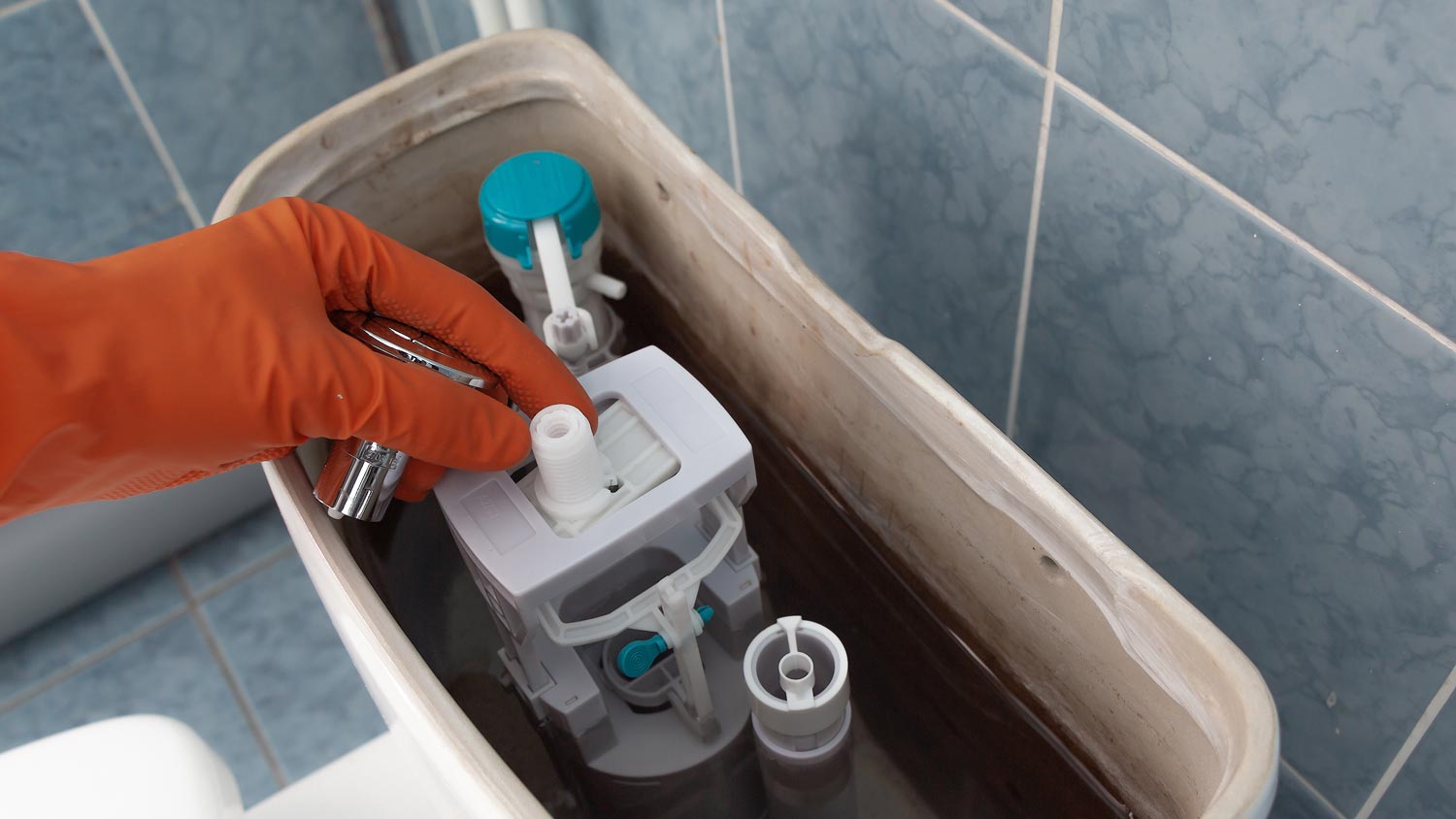Why Is My Toilet Clogged With Nothing in It? 4 Reasons Why It’s Happening
Mystery clog solved


Clogs can form in a toilet’s pipe S-trap or in the pipes throughout the home.
Lack of pressure from a low-flow toilet or a faulty flapper can cause toilets to clog more easily.
Flushing non-flushable items can result in a clogged toilet.
A blocked toilet vent will require a pro to climb on the roof to fix it.
We’ve all had that moment when we flush the toilet only to watch in horror as the water rises rather than falls. While an excessive amount of toilet paper or waste are the primary culprits for a clogged toilet, there are some hidden causes that prevent a proper flush. Here, four reasons why a toilet with nothing in it is clogged and how to fix it. .
1. There’s a Clog in the Pipe
When you flush your toilet and it’s clogged even though there’s nothing in it, the issue might lie in the S-trap or even further in the plumbing system. Over time, toilet paper can get stuck somewhere in the system and create a clog that ultimately backs up the toilet. This can happen more frequently if you have a low-flow toilet because these toilets often don’t have sufficient pressure to move the waste through the trap and down into the drain.
The Solution
The first attempt to unclog the pipe can be with a plunger. If the clog is close enough to the toilet, you may be able to dislodge it with the suction created when you plunge the toilet. If that doesn’t do the trick, you can use a toilet auger—also called a toilet snake—with a hooked head and crank handle to get deeper into the system and break up the clog. For clogs that prove too stubborn for a toilet auger, a local plumbing repair professional can help.
2. The Flapper is Faulty

Understanding the different parts of the toilet can help you figure out why your toilet is clogged with nothing in it. Inside the toilet tank, the flapper lifts when the toilet is flushed to allow water to flow from the tank and into the bowl. A faulty flapper won’t allow enough water power to flush the toilet and move the waste and toilet paper from the bowl into the plumbing.
The Solution
Sometimes, the solution to a faulty flapper is simply shortening or lengthening the chain that connects the flapper to the flush arm. You can try this first, but if that doesn’t fix it or if the flapper is visibly damaged, replacing a toilet flapper is a pretty easy DIY job if you have the right tools.
3. Someone Flushed a Non-Flushable Item
Non-flushable items include baby wipes, feminine hygiene products, diapers, paper towels, and pretty much anything other than toilet paper. These products don’t degrade the way toilet paper does and are more likely to build up in the system to create a clog. Other items that could end up getting flushed down the toilet include small children’s toys, jewelry, or even a piece of the toilet seat that broke off and accidentally fell in.
The Solution
Knowing what got flushed can help you decide whether or not you need to call a plumber. In some cases, you can dislodge items stuck in the S-trap. For those comfortable working with plumbing systems, you can remove the toilet and explore the pipes that go below the floor level—make sure you replace the wax toilet ring when you reinstall the toilet. If you don’t have any luck, then it’s time to call in a pro.
4. The Toilet Vent Is Blocked
A home’s plumbing system consists of more than a toilet and a sink. There are pipes behind the walls and under the floors and even a plumbing vent on the roof. The plumbing vent is responsible for pulling fresh air into the system, which helps increase the pressure when you flush. The toilet vent is on the roof, so dirt, sticks, leaves, and other debris can get stuck inside the pipe, resulting in a toilet that appears clogged for no reason. It can also accumulate ice and snow in the winter. A blocked vent won’t allow enough air in to build pressure, so the toilet will flush slowly. You may even hear gurgling sounds or smell sewage.
The Solution
It’s possible to clean and unclog a plumbing vent without getting on the roof, but it’s easier to clear the clog from the roof if you’re comfortable and take the proper safety precautions. Once you’re up there use a screwdriver to remove the vent cap. You can use a garden hose with a spray nozzle to clear the clog. A plumber’s snake can help break through the obstruction. If you’re not comfortable working on the plumbing vent on the roof, call a plumber.
When to Call a Pro
When troubleshooting with a plunger doesn’t resolve the problem or you can’t make sense of the mechanics of a toilet tank, then you want to call a professional plumber. Once the drain or vent is clogged, it will continue to get worse until the clog is broken up. If you’re unable to clear the clog on your own or are uncomfortable checking the vent on the roof, your best bet is to call in reinforcements.
Frequently Asked Questions
Yes, continuing to flush a clogged toilet is not likely to break up the clog. Instead, it will continue to put pressure on the clog while filling the bowl with more water, which can potentially cause the toilet to overflow—leading to an even bigger mess. Rather than repeatedly flushing, use a toilet plunger or plumber’s snake to dislodge the clog.
This scenario is unlikely but technically possible. Clogs that result from water-soluble materials like toilet paper or human waste may eventually break down in the water and allow the water and waste to flow freely once again. A more likely scenario is that you’ll have to learn how to unclog a toilet or call a plumber.



.jpg?impolicy=leadImage)
.jpg?impolicy=leadImage)
- Gas Plumbers
- Plumbing Repairs
- Sump Pump Installation
- Wood & Pellet Stove Repair
- Shower Repair
- Wood Stove Services
- Emergency Plumbers
- Fire Sprinkler Contractors
- Perc Test Companies
- Toilet Repair & Installation
- Boiler Repair
- Sewer Line Repair
- Faucet Repair
- Main Drain Camera Companies
- Foundation Drain Installation
- French Drains
- Bathtub Replacement
- Subcontractors
- Storm Drain Contractors
- Affordable Plumbing
- Plumbing & Heating Companies
- Bathroom Repair Services
- Sink Installation
- Commercial Plumber
- Barndominium Builders
- Water Line Repair
- Faucet Installation
- Water Line Installation
- Leak Detection










